John Hurrell – 26 July, 2018
With all this semantic layering you do wonder if the project is being over-determined, too controlled, too densely articulated, too obsessed with adding on meaning—and if the paintings can develop a life of their own, collaborating with the viewer, not the artists. Yet the bodily experience in the immersive brown space, with the occasional bone coloured field, is viscerally rewarding. Tertiary mixtures like dark brown are unusual for gallery or domestic walls. As part of a narrow space, they provide pleasantly strange sensations to walk into.
This is the second Billy Apple® show in Mokopōpaki’s Brown Room, one that came about when Jacob Raniera, the front person for Mokopōpaki, organised a conversation (via email) between the art entity Yllwbro (whom he represents) and Apple®. This involved looking at two paintings designed to present a newly minted Māori identity, te reo versions of the artist’s English Christian name, surname and registered logo; a second painting (on the right) responding to the first painting (on the left). With this statement and response format, it had affinities with the first exhibition.
Yllwbro rejected the idea of a simple Māori correlation/translation of ‘Billy Apple’ such as ‘Piri Āporo’. It was too obvious, too predictable-especially the ‘Āporo.’ The surname’s chosen replacement—‘Poho’—mirrors ‘Piri’ by way of starting with a ‘p’, and having one letter used twice that flanks the third letter on both sides.
‘Piri’ as a te reo ‘Billy’ also means (when a verb) to adhere or cling, while the juxtaposed ‘poho’ as a single word means chest, bosom or seat of affections. Attached to ‘piri’, the new word ‘piripoho’ means precious or treasured. It can also mean maternal love, referring to breastfeeding and parental bodily proximity.
The chosen colours are extremely important too—beyond their formal beauty and subtle softness. The brown of the gallery walls and background fields of the two canvases is obvious in its political significance, while the white of the letters in both paintings and the field surrounding the apple shape is not starkwhite but bone, a super pale—slightly warm and brown—gray. The te reo word for that colour is ‘iwi’ which of course means tribe and a particular collective community identity. Note also that in the doorway is a piece of nailed up Thar bone that Jacob, early on in the gallery’s history, installed as his own kind of mezuzah, a Jewish container for a tightly scrolled sacred text. Another unexpected resonance.
Of interest also are the two fonts, nuanced branding devices which Mokopōpaki and Apple® have swapped over in the two canvases so that sans serif Futura is on the right and tilted-seriffed Phinney Jenson on the left. The sense of togetherness or clinging between the two is accentuated.
With all this semantic layering you do wonder if the project is being a little over-determined, too controlled, too densely articulated, too obsessed with adding on meaning—and if the paintings can develop a life of their own, collaborating osmotically with the viewer, not the artists. Yet the bodily experience in the immersive brown space, with the occasional bone coloured field, is viscerally rewarding. Tertiary mixtures like dark brown are unusual for gallery or domestic walls. As part of a narrow space, they provide pleasantly strange sensations to walk into.
In the outer Grey Room, there are works by Apple®, Yllwbro and PĀNiA!. The Apple® study for a national flag uses tonal values to correlate Māori population statistics (via a percentage) with the national figures. Yllwbro focuses on the room next door, lining up a suspended Granny Smith apple—hanging from a brown string-with the brown Apple® logo as sort of target, and nodding to PĀNiA!’s toy horticultural tractor—placed near the Brown Room—on which the affectionate term ‘Piripoho’ is painted. Yllwbro also has a canvas wedge (painted brown) on the wall pointedly opposite the Apple® flag. Its tapered cross-section alludes to Māori population increases, the inevitable gaining of political power, and the eroding of Eurocentric hegemony within Aotearoa.
Two rooms: Grey and Brown: fierce and friendly—shrewdly juxtaposed.
John Hurrell
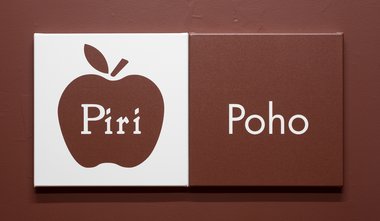

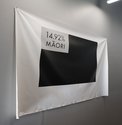
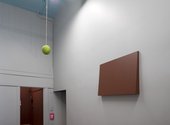
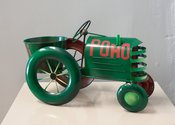
 Two Rooms presents a program of residencies and projects
Two Rooms presents a program of residencies and projects Advertising in this column
Advertising in this column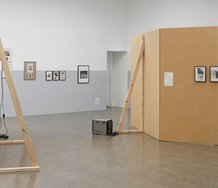
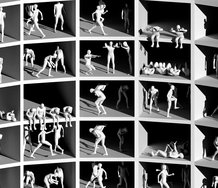
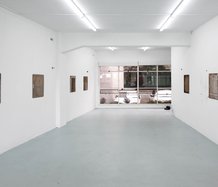
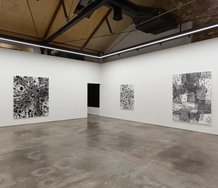
This Discussion has 0 comments.
Comment
Participate
Register to Participate.
Sign in
Sign in to an existing account.